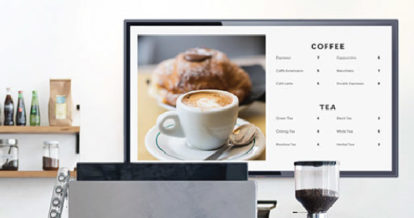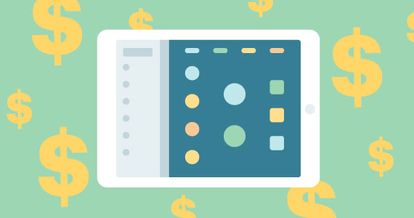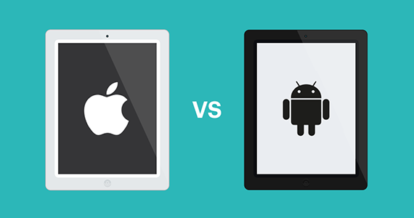From staff turnover to daily specials, the only constant in the restaurant industry is change.
Sometimes, all you can do is find the best ways to ride out these changes. Other times, it’s about using these changes to your advantage.
A major change you face as a restaurant owner is your menu. Whether it’s adding seasonal specials, showing your customers a picture of your delicious food, or simply wanting to update your menu or drive thru design, the constant changes can be expensive and exhausting.
A digital menu board is your secret weapon to making menu changes a breeze while engaging your customers in a modern way.
In this article, we’ll answer your digital menu board questions:
- What is a digital menu board?
- Who benefits from digital menu boards?
- What types of solutions are available?
- How much will do digital menu boards typically cost?
What Is a Digital Menu Board?
A digital menu board is an electronic and modern display of your menu, normally on a TV screen. They’re normally mounted to the wall so customers coming in can see the menu right from the door.
Digital menu boards shows customers what their options are to order before they reach cash. From drinks to add ons, they show off your menu to customers while they’re waiting in line. Customers arrive to the cash knowing exactly what they want to order – and maybe some extras they didn’t know were available!
Who Benefits from a Digital Menu Board?
It’s a busy Saturday morning, and the line at your coffee shop is moving along as happy customers grab their drinks and head out to start their weekend.
Until somebody gets to the front of the line and isn’t sure what to get. They couldn’t see the menu, and now need a few minutes.
We’ve all been there. But as restaurant technology evolves, so do the solutions for these problems.
The benefits of a digital menu board go beyond having a good-looking display set up in your fast casual, for both you and your customers.
Here are some of the main benefits for you as a restaurant owner and the benefits for your customers and their experience.
Top 3 Benefits for Restaurant Owners
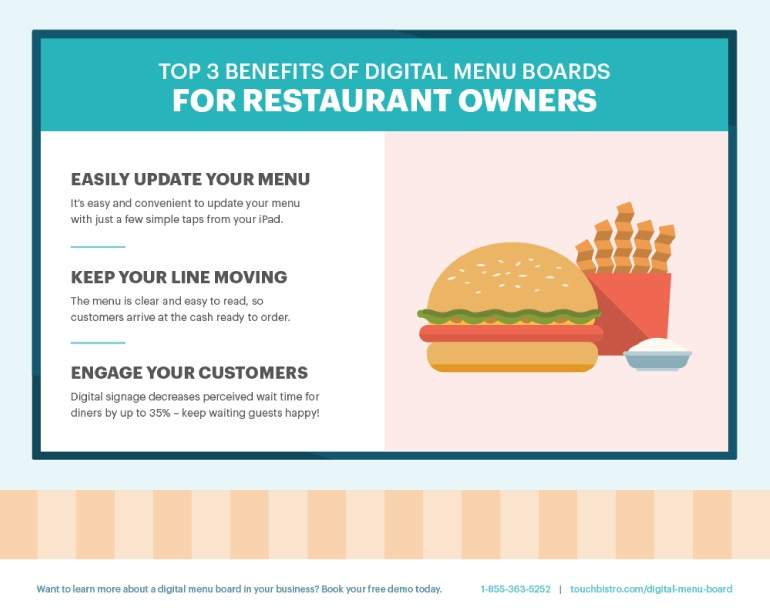
1) A Digital Menu Board Is Convenient
Your menu display can be updated with just a few simple taps from your iPad. You save money and time on every menu change.
If your digital menu board offers templated menus for you to use, you also know it will always look professional and modern! You want your digital menu to do your menu design justice, and having a professional looking design without the effort is a great way to do that.
2) A Digital Menu Board Keeps Your Line Moving
No more tapping your foot waiting for people to decide what to order when they get through the line.
Digital menu boards can help minimize any bottleneck at the cash because people can more easily read the menu in line, ahead of time. When diners can decide what to order while waiting, you can move your line faster and serve more customers in less time. Everybody wins!
3) A Digital Menu Board Engages Your Customers
Happy diners = happy life.
That’s the saying, right?
Consider how long customers are waiting to be served when you’re busiest. With average wait times at quick service restaurants increasing (up to 10%!) due to more customized orders, going the extra mile to improve the experience waiting in line is important.
Using menu boards to engage with customers the second they walk in keeps your diners happy, even when they have to wait.
Top 3 Benefits for Customers
Every business choice you make is driven by trying to give diners the best experience possible. A digital menu board enhances the experience for your guests in a few major ways.
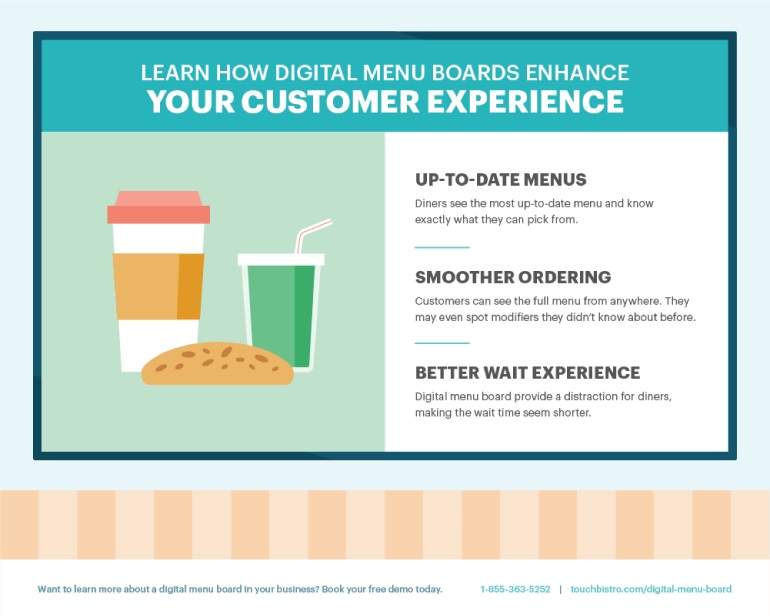
1) A Digital Menu Board Keeps Customers Updated
“Oh, sorry, that’s the old menu.”
No diner wants to pick out the perfect dish only to find out the menu changed on them. Whether it’s accidentally handing out an old printed menu or forgetting to erase part of a chalkboard set up, it can ruin a diner’s experience. No more risk of the old menu being on display!
2) A Digital Menu Board Is Easy for Customers to Read
The days of straining to read messy writing or tiny smudges is over!
A digital menu board amplifies your menu, projecting it on a screen in a clear and organized way. This makes it easier to read and, as a result, easier for customers to order from, even when your venue is super busy.
Who knows? They may spot some cool modifiers on the menu they didn’t know about before – making their experience better and upping their check size.
3) A Digital Menu Board Makes Customer Wait Times Feel Smaller
Did you know digital signage decreases perceived wait time for diners by up to 35%?
While waits are increasing, a digital menu board setup helps customer not feel it as much. It keeps diners distracted by giving them something to engage with – an attention-grabbing display that brings your menu to life. The long wait doesn’t seem so bad all of a sudden!
What’s This Gonna Cost?
Now that you know all the benefits of menu boards in your business, it’s time to discuss options.
We’ll cover three different menu board options:
- Traditional menu boards
- Premium third-party digital menu boards
- POS-integrated digital menu boards
Traditional Menu Boards
Traditional menu boards are still common. They’re fairly cheap to set up – a chalkboard and some chalk – and, if you can hang a frame, you can hang your menu board. Pretty simple!
So what are the cons?
You’re going to have to bank on you or your staff having a secret calligraphy talent. These handwritten menus require time to make sure the writing doesn’t look sloppy or – worse – illegible for your customers. They won’t do much good if people can’t read them!
Another major con is the time spent updating these chalkboards. The great handwriting takes time. If you have a robust menu, you can easily be down a staff member for a few hours as they update or refresh your menu board with changes.
Even if you choose to skip a menu board all together and stick to a physical menu, the time and costs associated with that will add up fast. For every menu change, you’re looking at redesigning and reprinting it. Printing alone for every menu update can be expensive and timely, but if you aren’t confident with your design abilities, you’ll have to tack on the cost of a designer and add their turnaround time on top of it all.
Cost of Traditional Menu Boards:
Chalkboard = $100.00 – $150.00
Chalk = $9.99
Install Tools = $24.99
Total = $134.98 to $184.98

While this option is the most affordable, the labor hours spent on making them look good add up quickly.
Restaurant technology is also constantly evolving. You want to keep your restaurant up-to-date, and the best way to do this is by choosing a digital provider for your menu board. You can go through a premium third-party digital menu board or see if your POS offers an integrated solution.
Premium Third-Party Digital Menu Boards
As embracing restaurant technology becomes more commonplace, third-party digital menu board providers are becoming more common. Some of these services offer a hardware and software bundled solution, while other solutions are just the software to design your menu board.
With either solution, you’ll be putting money towards hardware and software requirements.
While any technology upgrades require some investment, premium third-party digital menu boards can be particularly expensive – especially considering up-front costs to get all the required technology.
With these premium prices do come premium – and complicated – features. If you have numerous locations to justify such a robust system and the time to learn it all inside and out, it may be worth it.
A big perk of digital menu boards should be the time you save – you’re already busy running your restaurant, do you want to add a system so big it becomes overwhelming?
Besides the time required to master all the premium features, there are some other major factors you’ll want to consider with a premium digital menu board solution. Your menu boards won’t be integrated with your POS, meaning you’ll have to set aside time to manually update your menu instead of pulling it right from your system.
Cost of Premium Third-Party Providers:
Set up costs = $2,200.00 to $2,700.00 upfront
Monthly Fees = $20.00 to $35.00/month
Total = $2,200.99 to $2,700.00 in first year + $420.00 annually
POS-Integrated Digital Menu Board
So, where’s the middle ground?
Before diving into the weeds of third-party providers, check with your POS provider to see if they offer a digital menu board solution.
If you set up your menu right through your POS system, setting up your restaurant menu boards is even easier. You can download your menu and menu items directly from your point of sale. Not only is this a major timesaver, but not having to do any double entry means no risk of inputting errors.
With the right POS system or right tech, Internet outages don’t threaten your menus. Certain technology, like Apple TV, isn’t reliant on an Internet connection. Menu boards stay up even if your connection is down.
Cost of an Integrated Digital Menu Board:
Apple TV = $149.00 to $249.00
TV = $250.00 to $1,000.00
TV mount = $99.00
Monthly Fees = $20.00/month
Total = $498.00 to $1,348.00 in the first year + $240 annually
While the changes you juggle as a restaurant owner likely won’t be gone anytime soon, the technology available to help you navigate them is constantly improving.
Using a digital menu board in your restaurant helps you make the most of menu changes for both you and your diners. What are you waiting for?
Get the Complete Guide to Restaurant Reservations
Sign up for our free weekly TouchBistro Newsletter

